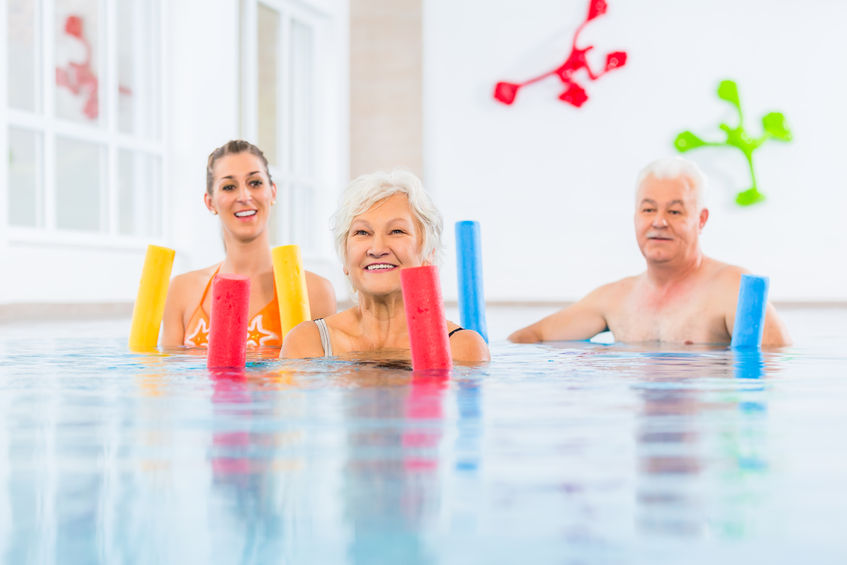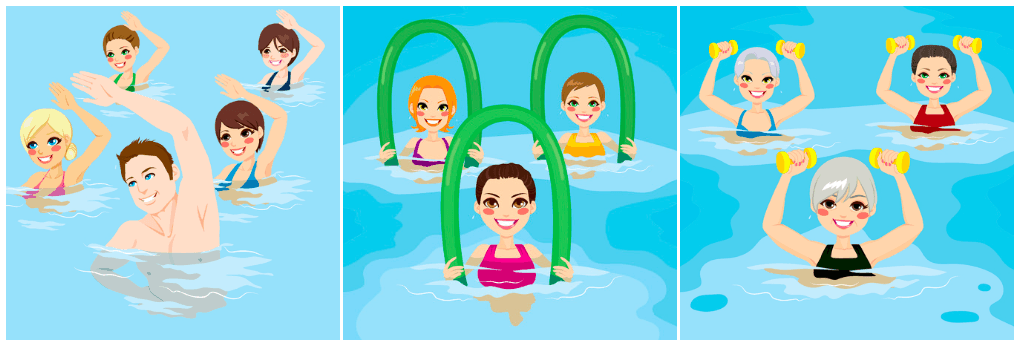As part of the customer care team, I get to speak to you, our customers, every day.
Each conversation gives me more insight into the difficulties of experiencing bone loss, and what it’s like living with the fear of fracture.
I have spoken to many customers who suffered compression fractures and limited mobility. They remind me that not everyone can walk or do weight-bearing exercises. Or that they are afraid of losing balance, falling, and breaking a hip. And I can see why. In all, 80–90% of hip fractures in older adults are related to falls — and women have a ⅙ risk of having a hip fracture in their life.¹
All studies show that exercise decreases the risk of fracture in adults with osteoporosis. They do this by maintaining or improving bone density and improving balance. This all leads to a decreased risk of falling.²⁻³
I always suggest a few important lifestyle changes to our customers. This includes a daily protein intake of 60 grams and exercising at least 30 minutes a day in addition to our bone supporting supplements. (You can read more about the role of protein for bone health here).
But speaking with you and hearing your concerns pushed me to do some research on alternative exercises that I can recommend to everyone. I know how important exercise is for your bones and health, and I’m passionate about providing everyone with a solution.
Hydrotherapy and Water Exercise for Osteoporosis
Before recommending this to you for bone building, I wanted to investigate if water exercises or hydrotherapy is beneficial for bone health. And also compare the benefits to regular exercises on land.
Usually, weight-bearing exercise is recommended for increasing bone density. In weight-bearing exercises, you are supporting your own body weight through your feet and legs against gravity. So that includes jogging, running, walking, and jumping for example. They increase bone density by having the muscle pull on the bone through impact on the ground and from carrying your body weight. The National Osteoporosis Society mentions that swimming is not weight-bearing. And that it does not affect bone density.³ That’s because there’s less gravity in an aquatic environment.
So What is Aquatic Exercise and Can It Help Your Bones?
Aquatic exercise is “vertical exercise in the water with the participant submerged to chest or shoulder depth”.⁴ I’ve included some examples at the end of this post for you to try. But for now let’s look at the benefits!
The Benefits of Aquatic Exercise:
- Decreased stress on weight-bearing joints due to the buoyancy of the water
- Increased mobility due to diminished gravitational pull
- The ability to use varying levels of resistance for strengthening
- Increased sensory stimulation in brain ⁴
So like I mentioned aquatic exercise is not usually recommended for individuals with osteoporosis because there’s less gravity. But it is recommended for individuals with more severe osteoporosis to improve function and balance. That’s because of the extra benefits from the support and comfort of the water.
Balance is important in reducing the risk of falling and thus the risk of fracture. A 2008 study compared aquatic versus land exercise on balance and quality of life in women with osteoporosis. The study found significant improvements in women’s balance in both land and water exercise. So if you have difficulty exercising on land (or simply don’t enjoy it) aquatic exercise may be a good alternative for you!
Another study from 2008 examined if aquatic exercise can improve bone density. They found that the exercise group was able to maintain and slightly improve their bone density compared to the control group.⁵ They were doing three hours of aquatic exercise for seven months.
So, not only can water exercises increase balance and posture, but they can also increase bone density. Not as much as running or other weight-bearing exercises, but still very significant!
Not a lot of clinical studies have been done to measure the bone-building effect of water exercises, but the ones that have been done show positive results. All of them show increases in balance and muscle development, and in some cases, increases in bone density too. Many people report decreased back pain and improved back strength and posture too.
Unfortunately, water-based exercise classes and hydrotherapy aren’t available everywhere. But don’t let that stop you! You can always try a few exercises at your local pool with an instructor or with friends. If you have hydrotherapy or aquatic classes close to you, I encourage you to take advantage of it. Plus it can be a lot of fun! And when you enjoy exercising, it doesn’t feel like you’re exercising.
Joining an aquatic exercise class for seniors can be terrific fun! Watch this short video from the ABC News channel featuring Dr. Jane Katz:
Do you have difficulty doing regular weight-bearing exercises or just want to try something new? If you do, I have a few great examples of water exercises for you to try.
Water Exercises
Get a feel for the water by slowly moving through it. Feel the warmth, the resistance, and get a sense of your buoyancy. Water spas or jacuzzis provide extra warmth and a soothing massage (but maybe not the super hot ones). Be careful getting into the pool as it may be slippery and don’t be afraid to ask for assistance.
Once you’re in, stand with the water up to your chest. If this makes you feel short of breath, move to shallower water. Remember do not push exercises to the extent that they are painful.
Also, make sure that your movements are comfortable. If a movement is painful, not only could you injure yourself, but you’ll be less likely to want to do it again.
- Stand with your feet hip-width apart and rest your arms on the surface of the water. Then gently turn your body to the right, swinging your left arm in front of you and your right arm behind you. Keep your elbows straight and in the water throughout. Repeat in the other direction.
- Stand holding on to the side of the pool. Bend one hip and knee up in front of you, standing tall and keeping your back straight. Then stretch your leg out behind you, keeping your knee straight. Repeat with the other leg.
- Try taking long strides forwards through the water. Once you’ve got that down, switch it up by walking sideways.
- Note: If you want to try hydrotherapy, make sure your therapist is an accredited physical therapist in your country.
How you move your body is just as important as what you put in your body. To help your new water-based exercise regime be even more effective, I recommend partnering your aquatic workouts with our clinically supported bone builders, AlgaeCal Plus and Strontium Boost. And if you haven’t tried it already, I recommend Triple Power Fish Oil. It will help reduce inflammation that is causing bone loss, plus it aids with swelling and pain in your joints.
Please let me know if you have any questions in the comment section below and definitely let me know how these exercises work for you!
PS: Our blog posts now have a print-friendly function that allows you to print our blog posts without images. You can remove any sections you like before printing. Click the green printer icon on the left of your screen.
Sources:
- Arnold, C. M., Busch, A. J., Schachter, C. L., Harrison, E. L., & Olszynski, W. P. (2008). A Randomized Clinical Trial of Aquatic versus Land Exercise to Improve Balance, Function, and Quality of Life in Older Women with Osteoporosis. Physiotherapy Canada, 60(4), 296–306. http://doi.org/10.3138/physio.60.4.296
- Brown, J. P., Josse, R. G., & The Scientific Advisory Council of the Osteoporosis Society of Canada. (2002). 2002 clinical practice guidelines for the diagnosis and management of osteoporosis in Canada. CMAJ: Canadian Medical Association Journal, 167(10), s1–s34.
- [NOF] National Osteoporosis Foundation 2008. Clinicians guide to prevention and treatment of osteoporosis [online].
- Sova R. Aquatics: the complete reference guide for aquatic fitness professionals. Boston: Jones & Bartlett; 1992
- Rostein A, Harush M, Vaisman N. (2008) The effect of a water exercise program on bone density of postmenopausal women. Journal of Sports Medicine and Physical Fitness. 48(3):352-9.






Maggie
October 1, 2016 , 9:43 amThe 2008 study…. 3 hours of aquatic exercise for 7 months? Please clarify…is that per day? per week?